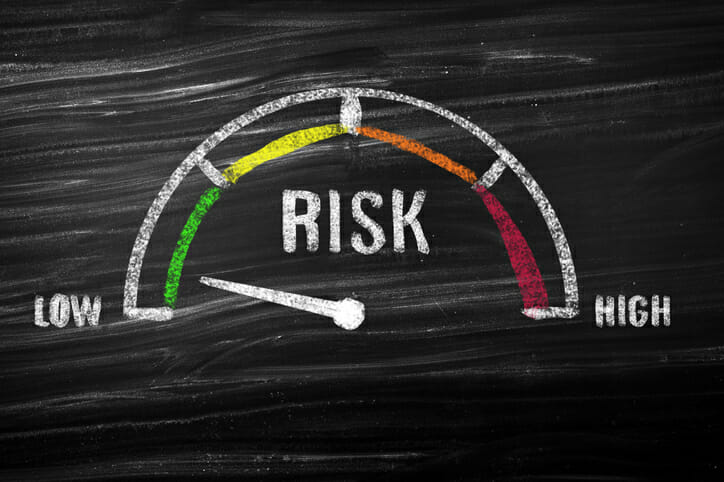In today’s volatile economic landscape, finding safe investments to protect your money has become a top priority for many individuals. Whether you’re saving for retirement, building an emergency fund, or simply looking to preserve your wealth, understanding which investment vehicles offer security without sacrificing reasonable returns is essential. While no investment is entirely risk-free, certain options stand out for their stability and reliability during uncertain times. From government-backed securities and high-yield savings accounts to blue-chip dividend stocks and inflation-protected bonds, the right combination of conservative investments can help shield your hard-earned money from market turbulence.
Consider consulting with a financial advisor if you have questions about building an investment portfolio.
1. FDIC-Insured Savings Accounts
FDIC-insured savings accounts represent one of the safest places to keep your money. When you deposit funds in these accounts, the Federal Deposit Insurance Corporation guarantees your deposits up to $250,000 per depositor, per bank, per ownership category. This government-backed insurance means that even if your bank fails, your money remains protected up to the coverage limit.
- Pros: The minimum balance to avoid a monthly fee is relatively low and you can link your checking account, providing easy access to your money.
- Cons: This option offers a fairly low rate of return. Bank rates have fluctuated quite a bit in recent years, so pay attention to the current state of things before opening an account. Also, there may be fees for making more withdrawals or transfers than the allowed number. Compare savings rates and look for banks with high-yield accounts.
2. Money Market Accounts (MMAs)
Money market accounts (MMAs) offer a compelling middle ground between checking accounts and certificates of deposit. These accounts typically provide higher interest rates than traditional savings accounts while maintaining FDIC insurance protection of up to $250,000 per depositor, per bank. This combination of enhanced returns and safety makes MMAs an attractive option for investors looking to protect their money while earning more than basic savings accounts offer.
- Pros: You can write checks against money market accounts and possibly make withdrawals with an ATM card.
- Cons: You may have to maintain a higher balance than with a savings account to avoid a monthly fee, and you may incur fees for making more withdrawals or transfers than the allowed number.
3. FDIC-Insured Certificates of Deposit (CDs)
Certificates of deposit (CDs) are like loans you make to a bank. It will pay interest periodically over the term of the CD and return the full amount at the end. In exchange, you agree not to move the money for the term of the CD or pay a penalty if you do. CD terms typically range from six months to six years.
- Pros: With the best CD rates, you’re getting a higher rate than you would in most savings accounts. And the CD amount may count toward your bank balance to help you avoid the monthly fee.
- Cons: You’re locking in your money at a fixed interest rate that may seem less acceptable if rates improve. Also, the best rates often require large minimums and long time frames.
4. Money Market Funds
These are mutual funds that invest in short-term instruments like CDs and U.S. Treasuries. For years, they were considered as safe as money in the bank. However, then Lehman Brothers went bankrupt in 2008, leading to a run on the Reserve Fund that caused its share price to go under $1 (normally, money market fund shares hold steady at $1). Still, money market funds are considered very low risk. Consider consulting with a fiduciary financial advisor as you determine whether money market funds should be a part of your financial profile.
- Pros: You can earn an interest rate comparable to CDs but without locking in your money.
- Cons: You have to open an account with a mutual fund company, which doesn’t have local branches like banks, and you may have to maintain a specified balance to avoid monthly fees. There’s also the slight risk of the share price falling under $1.
5. U.S. Savings Bonds: Series EE

While CDs can be thought of as loans to banks, U.S. savings bonds are like 30-year loans to the government. Some people would add free loans since the interest rate is quite low. With Series EE, the interest rate is based on yields of 5-year Treasuries and resets every six months.
- Pros: Interest compounds semiannually, there are tax benefits and the minimum is $25.
- Cons: The rate has been below 1% for years, you’ll pay a penalty if you withdraw your money before five years and only online accounts are available via TreasuryDirect.gov.
6. U.S. Savings Bonds: Series I
Series I bonds are just like Series EE, except for the interest rate. With Series I, you earn a fixed rate plus an inflation rate, which is based on the Consumer Price Index (CPI). In other words, you may get a little more return with Series I than Series EE.
- Pros: The same as Series EE, plus you can buy these bonds as paper with your tax refund.
- Cons: Even with the inflation adjustment, the return is still low.
7. Treasury Inflation-Protected Securities (TIPS)
As their name suggests, TIPS hinges on the CPI. When the index goes up, your security principal goes up, and when there’s deflation, your principal goes down. This movement affects how much interest you earn. When the security matures (it can be for five, 10 or 30 years), you get either the original principal back or the adjusted amount, whichever is larger.
- Pros: These are marketable securities, which means you can sell them for more (or less) than you paid in the secondary market. You can also buy them through banks and brokers as well as directly from the Treasury.
- Cons: You buy TIPS at auction with either a competitive or non-competitive bid. Which is all to say that investing in them is a bit more involved than the previous options and takes research and skill.
8. U.S. Treasury Bills, Bonds and Notes
T-bills are short-term loans to the government, ranging from four to 52 weeks. Usually, you pay less than face value for them, and when they mature, the difference between what you paid and the face value is your interest. Bonds, on the other hand, are issued for 30 years and interest is compounded semiannually, while notes are issued for two, three, five, seven and 10 years.
- Pros: You can buy Treasuries from banks and brokers as well as the government. The market is large, so you can easily sell them if you need to cash out.
- Cons: Again, trading in them profitably takes some skill and know-how. If you’re relying on a broker, you’ll have additional fees.
9. Municipal and High-Quality Corporate Bonds
Municipal bonds are issued by cities, states and other authorities seeking to fund public works. They are backed by the government body or the revenue from a service (say, tolls from a new bridge). Corporate bonds are as good as the financial strength of the company that issues them. High-quality bonds range from AAA to A.
- Pros: These bonds tend to pay a higher interest rate than Treasuries.
- Cons: They have more risk of default, require some research and come with fees if you’re using a broker.
10. Bond Funds
If you don’t have the time or inclination to learn enough about bonds to make money with them, you can buy them through a mutual fund. There are funds for every kind of bond: long-term, short-term, tax-efficient, corporate, municipal and treasury.
- Pros: You earn interest, plus you can profit from the share prices going up. Bond funds spread your exposure among many different bonds.
- Cons: You can lose money if you have to sell when prices are below what you paid. You also have to pay the mutual fund company’s fees.
What It Means to Invest Safely
Investing safely doesn’t mean eliminating all risk — it means understanding the relationship between risk and potential returns. When you invest safely, you’re making informed decisions that align with your financial goals and risk tolerance. This approach involves diversifying your portfolio across different asset classes to help protect against market volatility while still pursuing growth.
Before venturing into investments, establishing a solid financial foundation is essential. This typically includes having an emergency fund covering 3-6 months of expenses and managing high-interest debt. Creating this safety net ensures you won’t need to liquidate investments prematurely during unexpected financial challenges, which is a cornerstone of what it means to invest safely.
Spreading investments across various asset classes — stocks, bonds, real estate and cash equivalents — helps reduce overall portfolio risk. Different investments respond differently to market conditions, so when one sector underperforms, others might compensate. This balance is crucial for maintaining stability while still capturing growth opportunities in your investment journey.
Your investment timeline significantly impacts what “safe” means for your situation. Longer time horizons generally allow for more aggressive strategies since you have time to recover from market downturns. Conversely, if you’ll need your money within a few years, preserving capital becomes more important than pursuing higher returns.
Bottom Line

While no investment is completely risk-free, options like high-yield savings accounts, certificates of deposit, and Treasury securities offer reliable ways to preserve capital while earning modest returns. Diversification remains a cornerstone strategy — spreading your investments across different asset classes can help shield your portfolio from market volatility. Remember that safety often comes with trade-offs; the most secure investments typically generate lower returns than riskier alternatives. The key is finding the right balance based on your financial goals, time horizon and risk tolerance.
Tips for Conservative Investors
- Work with a financial advisor to create a financial plan. Finding a financial advisor doesn’t have to be hard. SmartAsset’s free tool matches you with vetted financial advisors who serve your area, and you can have a free introductory call with your advisor matches to decide which one you feel is right for you. If you’re ready to find an advisor who can help you achieve your financial goals, get started now.
- Lower your costs with bond index funds. Because index funds are passive, they are cheaper than actively managed ones. If you are a confident investor, consider buying into a bond index exchange-traded fund (ETF), which trades like a stock.
- Keep the tax benefits in mind. Interest from U.S. savings bonds and treasuries are not taxed at the state or city level. Also, the IRS doesn’t count the earnings as income until you redeem the bonds. So government bonds may effectively have a higher rate than their stated rate. Check out our capital gains tax calculator to see the tax implications of your investments.
- Ladder your bonds. Money managers recommend structuring your bond investments so that they are maturing in intervals and you are reaping the highest yields. To start, you would buy bonds for, say, one year, two years, three years, five years and 10 years. When each bond matures, you buy a new bond for 10 years.
Photo credits: ©iStock.com/marrio31, ©iStock.com/pabradyphoto and ©iStock.com/Everste
